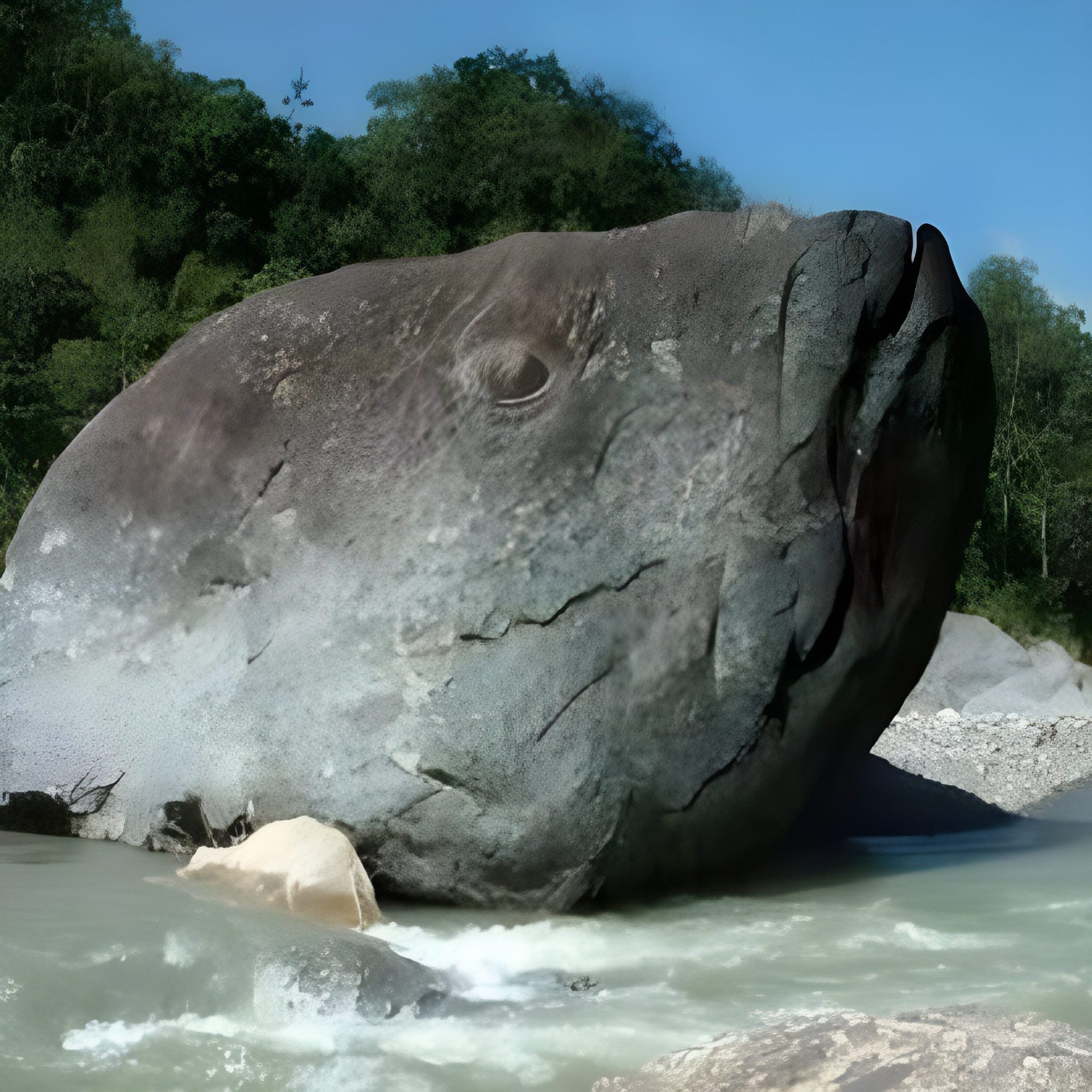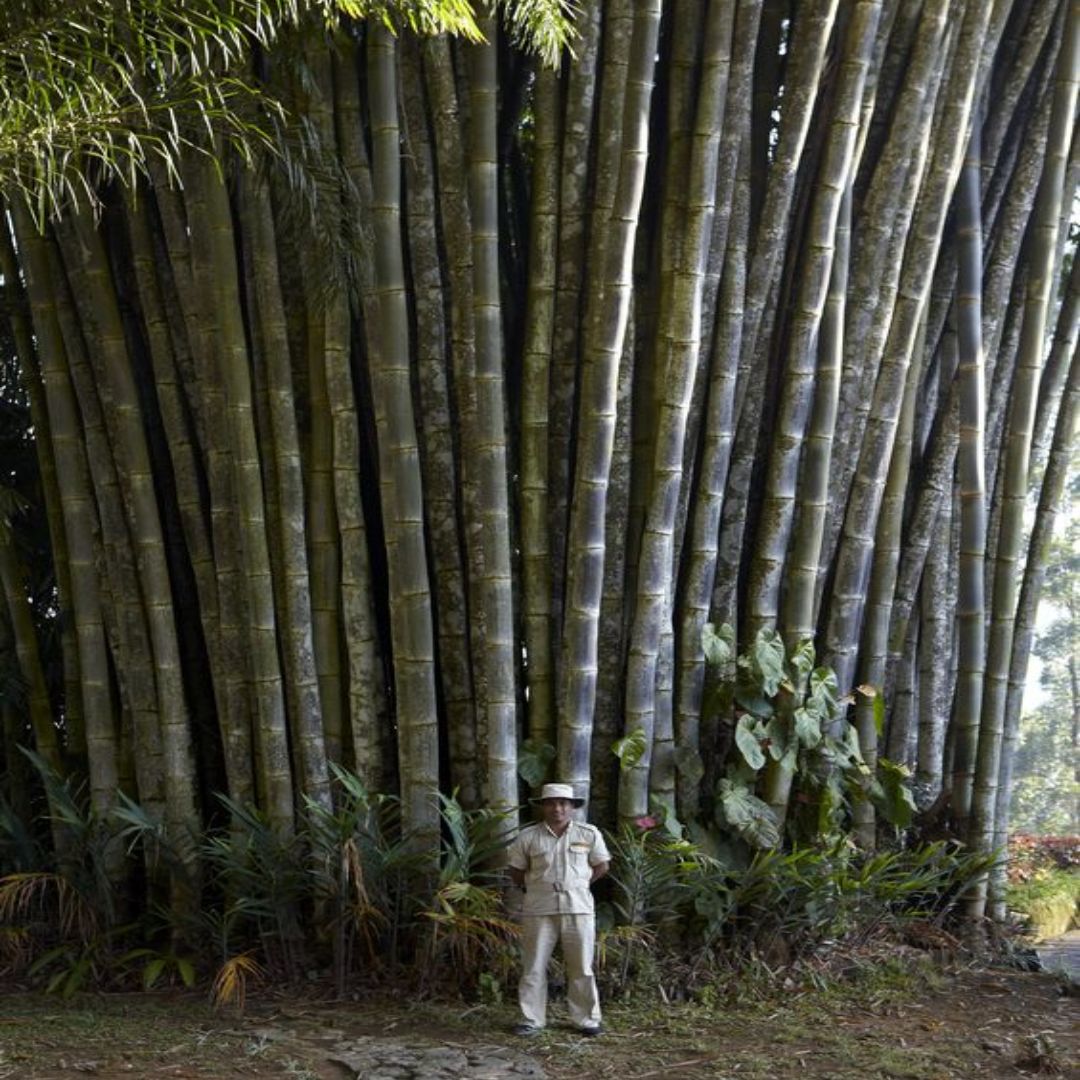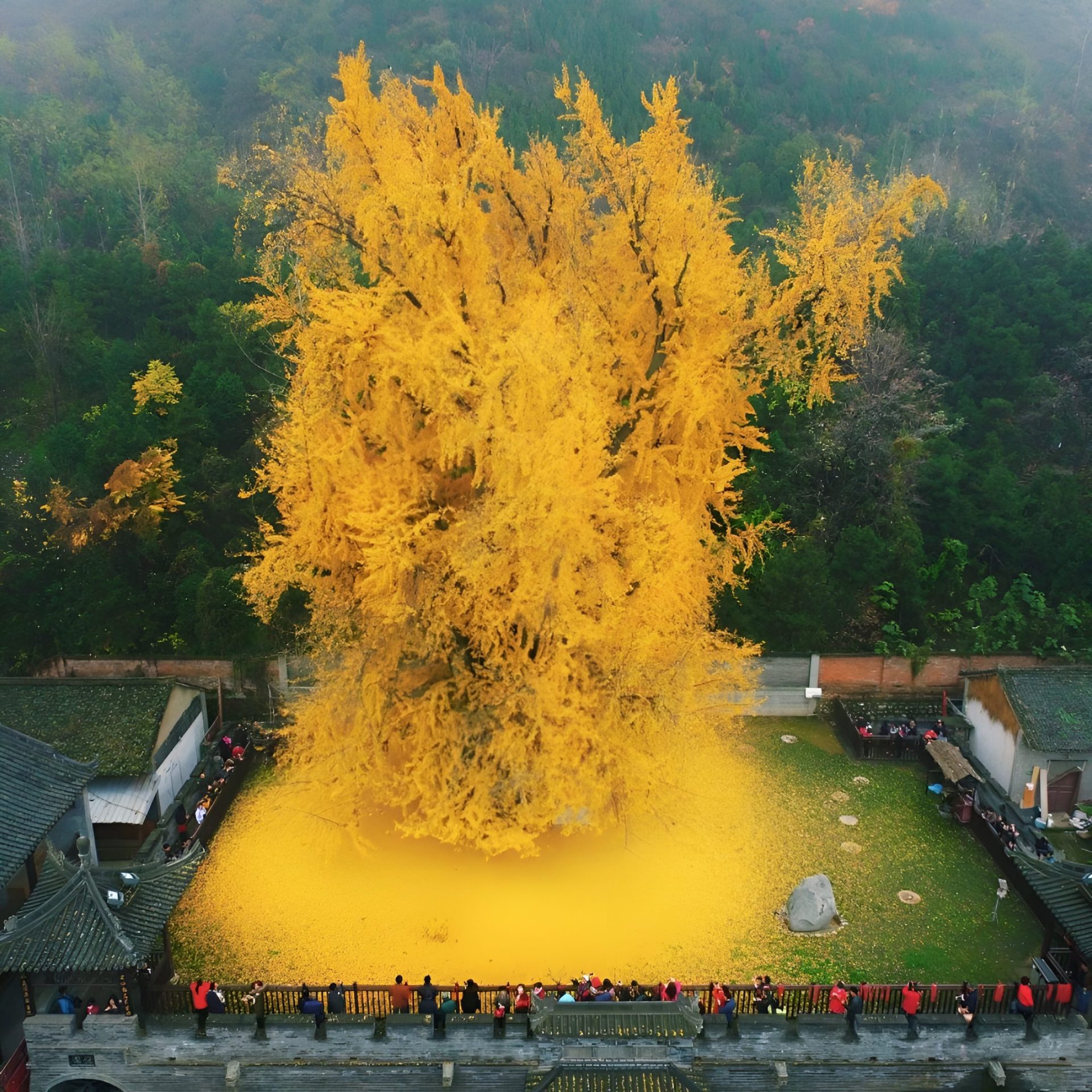I have never seen a Jabuticaba tree since it is native to Brazil and only grown in some of the warmer climates in the United States, but when I saw a photograph of one online (which was the first time I had ever heard of it), I knew I had to research this amazing tree to find out all I could about it. This article is the result of that research.
The name “Jabuticaba” is believed to have originated from the indigenous Tupi language of Brazil and is thought to be a combination of “jabuti” (tortoise) and “caba” (place of). In reference to a tortoise, the name is thought to reflect the slow and steady growth habit of the tree, which has been cultivated for its fruit for centuries in South America. It is also known as the Brazilian grapetree.
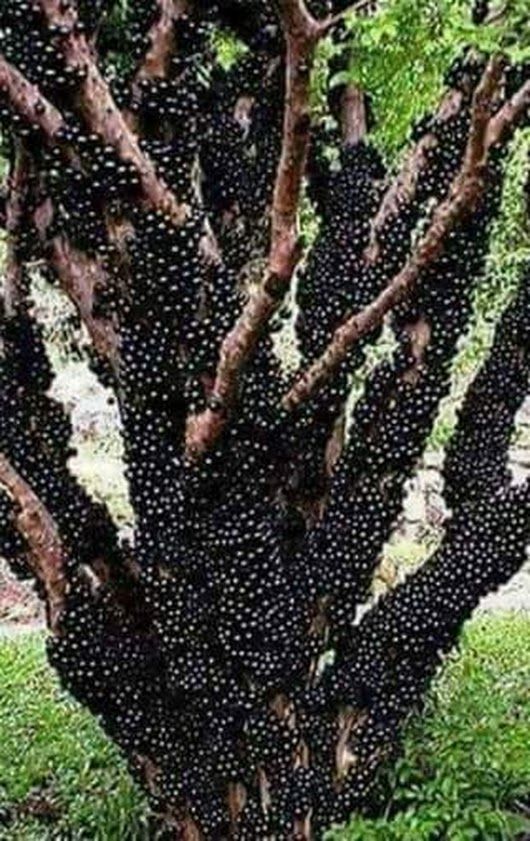
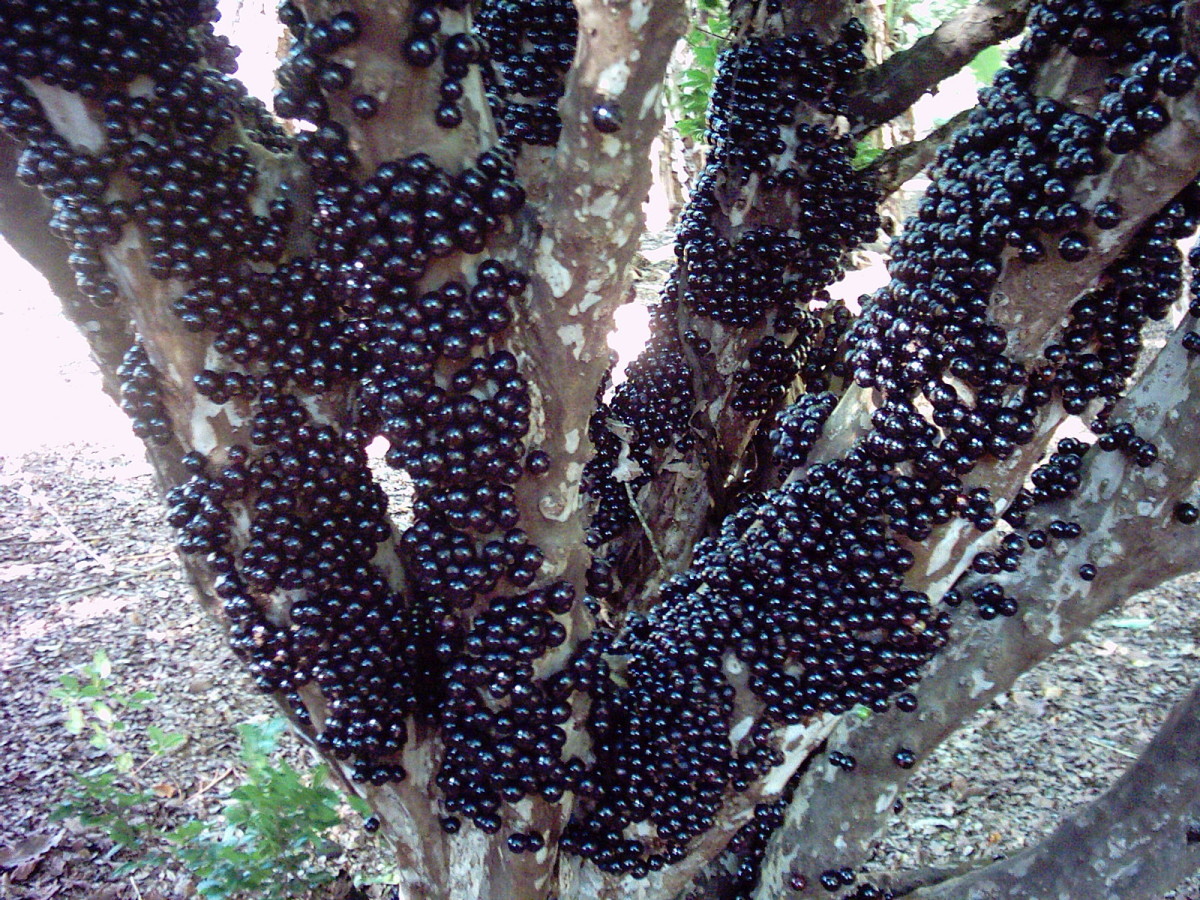
You simply don’t see this every day! The fruit of the Jabuticaba tree grows on the trunk of the tree.
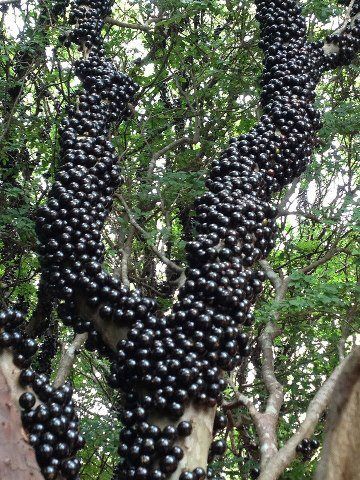
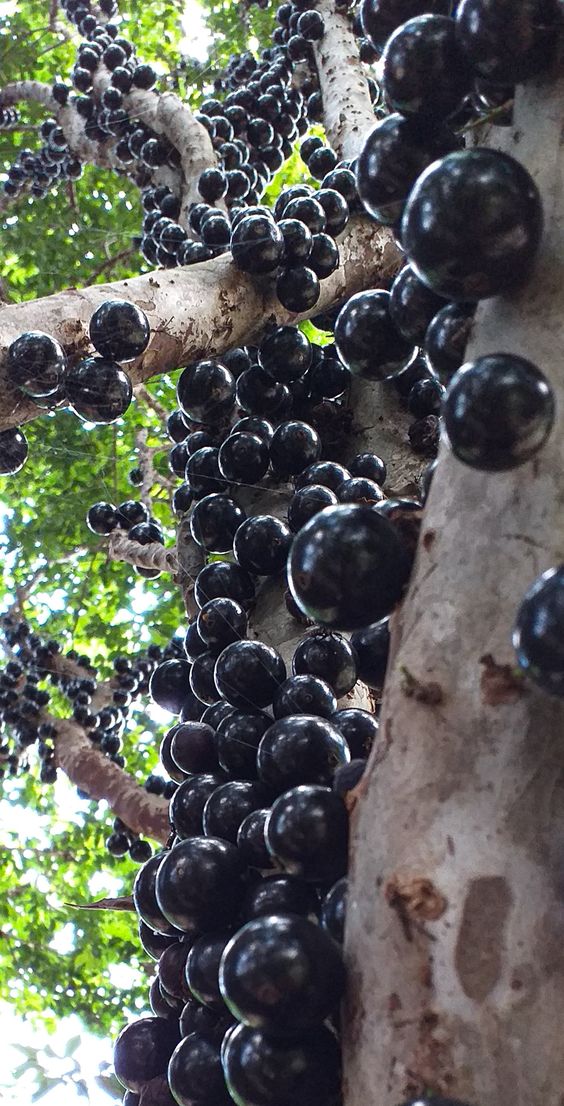

The fruit produced by the Jabuticaba Tree grows directly on the trunk and branches.
The Fruit of a Jabuticaba Tree
The fruit of the Jabuticaba tree is often described as having a similar appearance to grapes (round, dark purple with a gelatinous texture), although it is not a variety of grapes. The flavor of the interesting fruit is unique and has been described as having a combination of flavors, including grape, mulberry, and lemon. There are many ways that the fruit of the Jabuticaba tree is used.
These are some of the ways you can enjoy the fruit of this tree:
It is often eaten fresh, either as a snack or as a topping for desserts and other dishes.
It is frequently made into a juice, which can be consumed on its own or used in cocktails, smoothies, and other beverages.
Jabuticaba wine, made by fermenting the juice of the fruit, is a popular beverage in some regions of South America.
The fruit can also be used to make jams, jellies, or other spreads.
In some regions, the fruit and leaves of the Jabuticaba tree are used in traditional medicine, where they are believed to have therapeutic properties. The fruit is thought to have a range of health benefits, including antioxidant, anti-inflammatory, and antibacterial effects.
Note: The use of the fruit and leaves of the Jabuticaba tree for medicinal purposes has not been extensively researched or scientifically validated. If you are interested in using the fruit of the Jabuticaba tree for medicinal purposes, it is recommended that you consult a healthcare professional or a qualified practitioner of traditional medicine.

Various stages of growth of the fruit on a Jabuticaba tree. When ripe, the fruit resembles a grape (or a very small pomegranate).
“Jabuticaba” vs. “Jaboticaba”
“Jaboticaba” and “Jabuticaba” refer to the same tree and fruit. The name “Jabuticaba” is often used interchangeably with “Jaboticaba”, and both spellings are widely recognized and used. However, “Jabuticaba” is the more widely-accepted spelling in English, and it is also the spelling that is used by most scientific and horticultural sources.

The fruit of the Jabuticaba tree is often used to make jams and jellies.
Can They Be Grown in the U.S.?
If you live in USDA growing zones 9 through 11, you’re in luck, as Jabuticaba trees are well suited to warm, humid climates and can be grown in those zones.
Growing From Seed Is Not Recommended
Jabuticaba trees can be grown from either seed or cuttings. Growing from seed is often considered a more challenging and less reliable method, as the seed has a low germination rate and the resulting trees may have reduced fruit quality compared to trees grown from cuttings.
Cuttings are more reliable and produce trees that are identical to the parent plant, ensuring consistent fruit quality. Cuttings can be taken from healthy, mature branches and rooted in a rooting hormone solution before planting. Cuttings are the preferred method of propagation for commercial orchards, as it provides a quick and efficient way to produce high-quality trees for fruit production.
Grafting (where a scion of a desirable variety is grafted onto a root stock) and air layering (wounding a branch and surrounding it with rooting hormone and a moist medium to encourage root growth) are additional ways to propagate Jabuticaba trees.
Buy a Young Jabuticaba Tree
If you are interested in having one of these fascinating trees, I recommend you buy one that is already at least five feet tall, as this is an extremely slow-growing tree. Jabuticaba trees are available at nurseries, online retailers, and specialty growers.
Seeded Similar to Grapes
The Jabuticaba tree’s fruit contains seeds much like grapes. Each individual fruit typically has several seeds, which are located in the fleshy pulp. The seeds are small, black, and surrounded by a thick layer of sweet, juicy flesh. The seeds are edible but not commonly consumed because they are tough and not very tasty.
How to Plant and Grow a Jabuticaba Tree
The USDA growing zones 9 through 11, the ones in which you could successfully grow a Jabuticaba tree, include coastal and southern regions like Florida, southern California, and the Gulf Coast. However, your tree may struggle in areas with extended periods of cold or frost and may need to be protected against such conditions. You should always research the specific climate conditions of your area to be certain they are suitable for growing Jabuticaba trees before you decide to plant one.
The best way to plant a Jabuticaba tree depends on the specific conditions in your area and the stage of growth of the tree. Here are some general guidelines for planting :
Jabuticaba trees prefer well-drained soil in a sunny location. (Plant a suitable distance away from patios or other outside structures to prevent the fruit from falling and leaving stains).
The soil should be well-drained and rich in organic matter. If necessary, you can amend the soil with compost or other organic matter to improve its fertility and structure.
If planting a young tree, dig a hole that is slightly wider and deeper than the root ball. Place the tree in the hole, spreading out the roots, fill the hole with soil, firming it around the roots to remove any air pockets. Water the tree thoroughly after planting.
Regular watering is important for the first few months after planting, especially during dry periods. A layer of mulch a few inches thick around the base of the tree will help conserve moisture and suppress weeds. Don’t put the mulch against the base of the tree (always leave some room between the mulch and a tree’s trunk).
You may want to stake your young tree to provide support until it is established and able to stand on its own.
You should always research the specific growing conditions for these trees in your area and consult your local extension service for advice on specific ways to plant and care for your tree, as the guidelines I’ve outlined above are general in nature.

This photo shows the beautiful leaves of the Jabuticaba tree.
Jabuticaba Tree Leaves
The evergreen leaves of the Jabuticaba tree are almost as fascinating as the fruit of the tree. The leaves have a distinctive, pleasant aroma, especially when they are crushed or rubbed, an aroma often described as a combination of floral and citrus scents.
The dark green leaves are oval or elliptical with a smooth, glossy appearance and they are relatively small and compact. They have a distinctive venation pattern: prominent veins running from the base of the leaf to the tip.
The leaves on the tree are flexible and will not easily tear or shred, even when subjected to high winds or heavy rain. They are produced in clusters on the branches of the tree, and tend to grow in a dense, lush pattern. The tree is known for its dense canopy of leaves, which not only provides ample shade but helps to conserve water. The tree’s lush foliage is an important part of its overall appeal, and one of the reasons why it is widely cultivated for ornamental purposes in many places.
References
- Fulton, April (August 5, 2016). National Geographic Magazine. Chefs See an Olympic Opportunity for Rainforest Preservation
- Grant, Amy (Gardenknowhow.com). Jaboticaba Tree Care: Information About Jaboticaba Fruit Trees
- healthyfocus.com. 7 Amazing Benefits of Jabuticaba
- https://floridafruitgeek.com (4/21/2018). Japoticaba has some tasty cousins
This content is accurate and true to the best of the author’s knowledge and is not meant to substitute for formal and individualized advice from a qualified professional.
Source: owlcation
